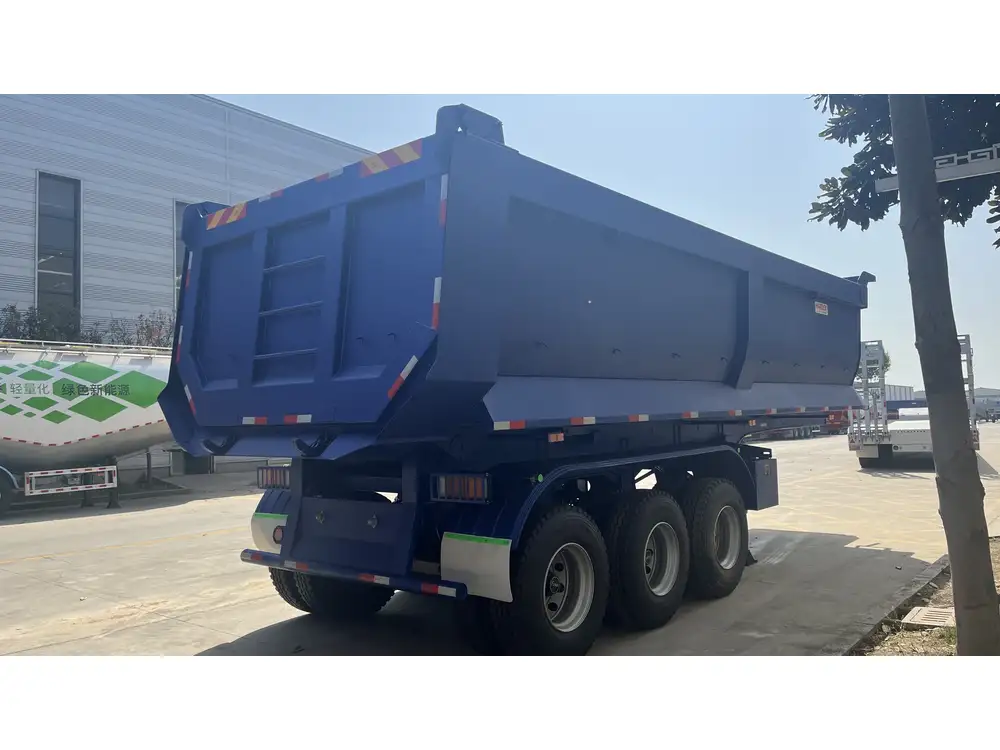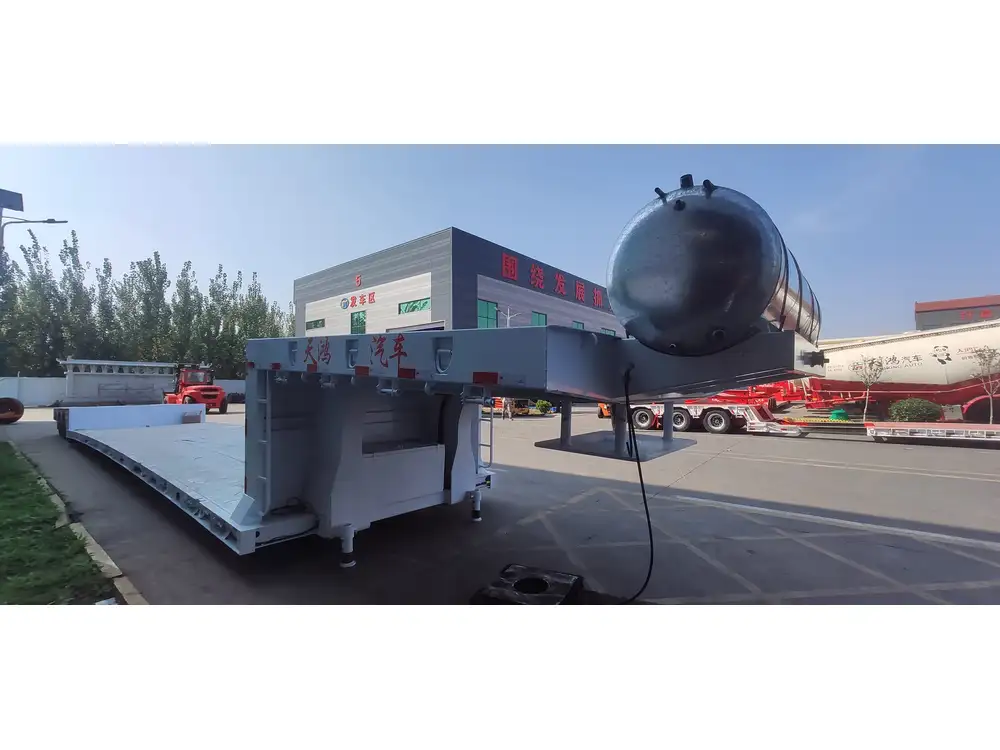Introduction
Unloading a semi-trailer effectively is crucial for any logistics or transport manager. The process can become particularly challenging when ramps are not available. This guide explores methods, techniques, safety protocols, and equipment considerations for unloading semi-trailers without ramps, ensuring efficiency while minimizing risks.
Understanding the Challenges
Unloading a semi-trailer without ramps poses unique challenges and risks. Understanding these can aid in strategic planning and implementation. Here we outline the main issues involved.
| Challenges | Implications |
|---|---|
| Safety Risks | Increased risk of injury to personnel if proper techniques aren’t used. |
| Product Damage | Higher potential for damage to cargo if not handled correctly. |
| Time Efficiency | Longer unloading times can affect overall logistics. |
| Equipment Availability | Limited access to necessary unloading tools can hinder the process. |

Preparation Before Unloading
Assess the Situation
Before proceeding with unloading, a thorough assessment is necessary. Key considerations include:
- Load Type: Evaluate if the cargo is fragile, heavy, or large. This affects your approach.
- Truck Condition: Ensure the truck is stable, parked on a level surface, and the brake is engaged.
- Work Area: Clear the unloading area of obstacles to ensure a safe working environment.
- Available Equipment: Identify any available tools or equipment, such as forklifts or pallet jacks.
Safety Gear
Equipping your team with the right safety gear is crucial. Essential safety gear includes:
- Hard hats
- Safety glasses
- Steel-toed boots
- Gloves
- High-visibility vests
Checklist for Safety Gear:
| Item | Purpose |
|---|---|
| Hard Hats | Protect against head injuries |
| Safety Glasses | Shield eyes from debris |
| Steel-Toed Boots | Prevent foot injuries |
| Gloves | Enhance grip and protect hands |
| High-Visibility Vests | Ensure visibility in high-traffic areas |

Techniques for Unloading Without Ramps
1. Using a Forklift
Method: The most common way to unload semi-trailers is to use a forklift. Here’s how to do it effectively:
- Positioning: Align the forklift parallel to the trailer.
- Lifting: Insert the forks beneath the load and lift slightly to clear the trailer bed.
- Transitional Movement: Move backward while ensuring the load remains stable.
Pros and Cons:
| Pros | Cons |
|---|---|
| Fast unloading | Requires forklift operator |
| Ideal for heavy loads | Limited access for larger items |
| Minimizes physical strain | Requires flat, stable ground |
2. Manual Unloading with Hand Trucks
When using a forklift isn’t feasible, hand trucks can be a great alternative:
- Loading: Tilt the hand truck backward to slide it under the load.
- Lifting: Lift the handle and roll the hand truck away from the trailer.
Pros and Cons:
| Pros | Cons |
|---|---|
| Low-cost and portable | Slower than a forklift |
| No special training required | Physical strain can be significant |

3. Utilizing Dollies
Dollies can serve the purpose of taking individual pallets off the trailer:
- Deployment: Place a dolly underneath the load.
- Transportation: Push the dolly away from the trailer.
Pros and Cons:
| Pros | Cons |
|---|---|
| Suitable for smaller items | Can be cumbersome for larger loads |
| Effective for very narrow spaces | More time-consuming overall |
4. Gravity-Assisted Techniques
If there’s an incline nearby, gravity can assist in unloading:
- Positioning: Strategically park the trailer on an incline.
- Nudging: Carefully nudge smaller items using push techniques; they will roll down safelyy into the loading zone.
Pros and Cons:
| Pros | Cons |
|---|---|
| Minimal equipment required | Risk of items rolling out of control |
| Fast for lightweight loads | Unsuitable for fragile cargo |
Safety Protocols During Unloading

Incident Prevention
When unloading without ramps, safety should be prioritized. Here are strategies for incident prevention:
- Training: Ensure all team members are trained on proper unloading techniques.
- Spotters: Designate one or more individuals to oversee the unloading area.
- Load Stability Checks: Before moving loads, ensure they are stable and secure.
Emergency Response
Prepare for potential incidents by establishing an emergency response plan:
- First Aid Kit: Keep it accessible and stocked.
- Emergency Contacts: Have emergency numbers ready.
- Accident Reporting: Implement a reporting procedure for any incidents that occur.
Post-Unloading Procedures

Inspection of Cargo
After unloading, thorough inspection is critical:
- Check for Damage: Ensure that all items are intact and present.
- Document Findings: Record any discrepancies or damages for accountability.
- Reorganize Equipment: Neatly store tools and unused equipment.
Clean-Up
A clean workspace promotes safety and efficiency:
- Dispose of packing materials responsibly.
- Clear pathways to minimize tripping hazards.
- Ensure the area is free of cargo items that could obstruct movement.
Frequently Asked Questions (FAQs)

Q1: What if I only have small, heavy items to unload?
Answer: In such cases, a hand truck or dolly is highly effective. Ensure all personnel employed are physically fit and aware of safe handling techniques to avoid injuries.
Q2: How can I ensure stability during unloading?
Answer: Use appropriate equipment, check load stability before lifting, and distribute weight evenly during the process.
Q3: Is it legal to unload in public areas without proper equipment?
Answer: This largely depends on local regulations. Always check with local authorities and ensure compliance to avoid penalties.

Q4: What if I lack heavy machinery and have large items?
Answer: Collaborate with a logistics service provider that can assist with specialized equipment to handle such loads.
Conclusion
Unloading a semi-trailer without ramps necessitates thoughtful preparation, proper techniques, and a keen focus on safety. By understanding various methods like utilizing forklifts, hand trucks, and gravity-assisted techniques, professionals can efficiently and effectively handle unloading tasks. This guide serves as a comprehensive resource equipped with strategies to navigate unloading challenges securely.
Emphasizing safety and efficiency will not only streamline your operations but also enhance the overall productivity of your logistics processes. This proactive stance not only mitigates risks but also establishes your reputation as a reliable entity in the transportation industry.
Success in every load awaits those who are equipped with knowledge and preparedness!



